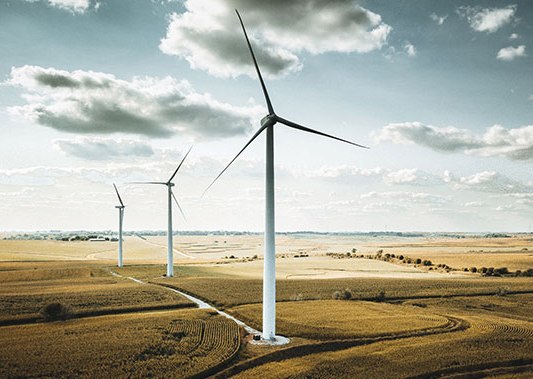Alexander De Croo
Both the COVID-19 pandemic and global warming are about survival, and are health crises at their core. But typology is not their only common feature. We can also overcome them in a similar way – by working with, rather than against, our human nature.
The alpha and omega of climate policy is reducing greenhouse-gas (GHG) emissions: the European Union aims to cut them by 55 per cent by 2030, and to achieve net-zero emissions by 2050. Our first reaction to these ambitious goals frequently is that we ought to eat less meat, fly less often, reuse what we use, and question our assumption that GDP must increase constantly. From this perspective, cutting GHG emissions seemingly entails a reduction of our current living standards.
Likewise, we initially tackled COVID-19 by curtailing social life, closing shops and businesses, and reducing civil liberties. That meant fewer contacts and fewer contracts. But it soon became clear that these measures were no more than a temporary quick fix. In our liberal Western societies, it is – fortunately – impossible to keep people locked up at home.
The fact that almost all countries have struggled through a second or even a third wave of infection shows that a strategy of ‘less’ cannot bring a durable victory over the pandemic. Humans are not built for ‘less.’ Although people often are wrongly portrayed as being mere profit maximisers, we are without doubt born competitors. We love wheeling and dealing and making big plans to leave behind a better world for our children. But, as Aristotle observed, we are also social animals par excellence.
Any climate-change policy that denies or ignores these fundamental traits is doomed to fail. After all, what initially slowed down the coronavirus was not brutal rule enforcement, but our sociability: the collective acknowledgement that every individual effort mattered and our willingness to shield others from harm by keeping our distance.
But what the pandemic showed, above all, was the power of human curiosity, which enabled us to develop COVID-19 vaccines in less than a year. The very concept of a vaccine – injecting a weakened version of an actual virus into someone’s bloodstream – is as daring as it is ingenious. Ever since Edward Jenner developed the first vaccine, against smallpox, in 1796, scientists have constantly modified and improved the technique. By the end of the twentieth century, vaccines were protecting billions from myriad diseases, including polio, diphtheria, yellow fever, typhoid fever, tuberculosis, hepatitis, rabies, and tetanus. Partly as a result, average life expectancy in Europe has increased from under 40 years in the 1800s to about 80 today.
In the twenty-first century, this combination of incremental improvement and innovative breakthroughs resulted in the new mRNA technology that makes vaccine production more stable, and therefore faster and more predictable. Because of mRNA platforms, some COVID-19 vaccines can be adapted to coronavirus mutations almost overnight.
We should tackle the climate crisis in the same way. The strategy we need is not ‘less’; it is ‘more, but different.’ That means reorganising our economy and investing in new technologies, while recognising that there is no silver bullet or miracle solution. Science and entrepreneurship are piecemeal: two steps forward, one step back, and then another two sideways before we progress again. Moreover, human creativity cross-pollinates economic activity. Today, electric vehicles still emit a significant amount of carbon dioxide indirectly. But in another decade or so, EVs will be close to zero-emission, and we will also fly carbon-free.
Innovation and competition are the flywheels that drive knowledge and innovation. The wind turbines of the 1980s and 1990s had steel rotor blades with a diameter of 17 meters (56 feet) and produced an average of 75 kilowatt-hours of electricity. Today’s turbines have carbon rotor blades with an average diameter of 126 meters – bigger than an Airbus A380 – and produce 7,500 kilowatt-hours on average. That represents a 100-fold increase in production capacity in a little over 20 years.
Battery capacity has increased rapidly, too. The nickel-iron batteries of the 1970s were still pretty much the same as those Henry Ford used for his Model T. They pale in comparison to the lithium-ion batteries that today power whole cities such as Zhangbei, China. These leaps in innovation often do not appear fundamental to the public, but they constitute the very essence of human progress. Our impending victory over COVID-19 shows the way forward for limiting global warming. We will conquer the virus by focusing on a common goal, cooperating, and allowing people the freedom to innovate. Furthermore, governments worldwide have recognised when to step in to encourage innovation and when to take a step back.
Today, many countries have developed post-crisis recovery plans. Governments should use stimulus spending to turbocharge private investments and reduce private risk. Every climate-friendly project – whether new hydrogen technology, trains, or offshore wind farms – both embodies previous innovations and drives future breakthroughs. The result is a virtuous cycle of change, with each revolution bringing into being a world that is a little different, a little more efficient, and a little better.
We will overcome the pandemic by channeling our human nature. And we will overcome the threat of climate change the same way. By adding every individual contribution to the collective effort, we can and will make a huge difference. That is how humanity moves forward together and mitigates global threats.
The writer is Prime Minister of Belgium. ©Project Syndicate
